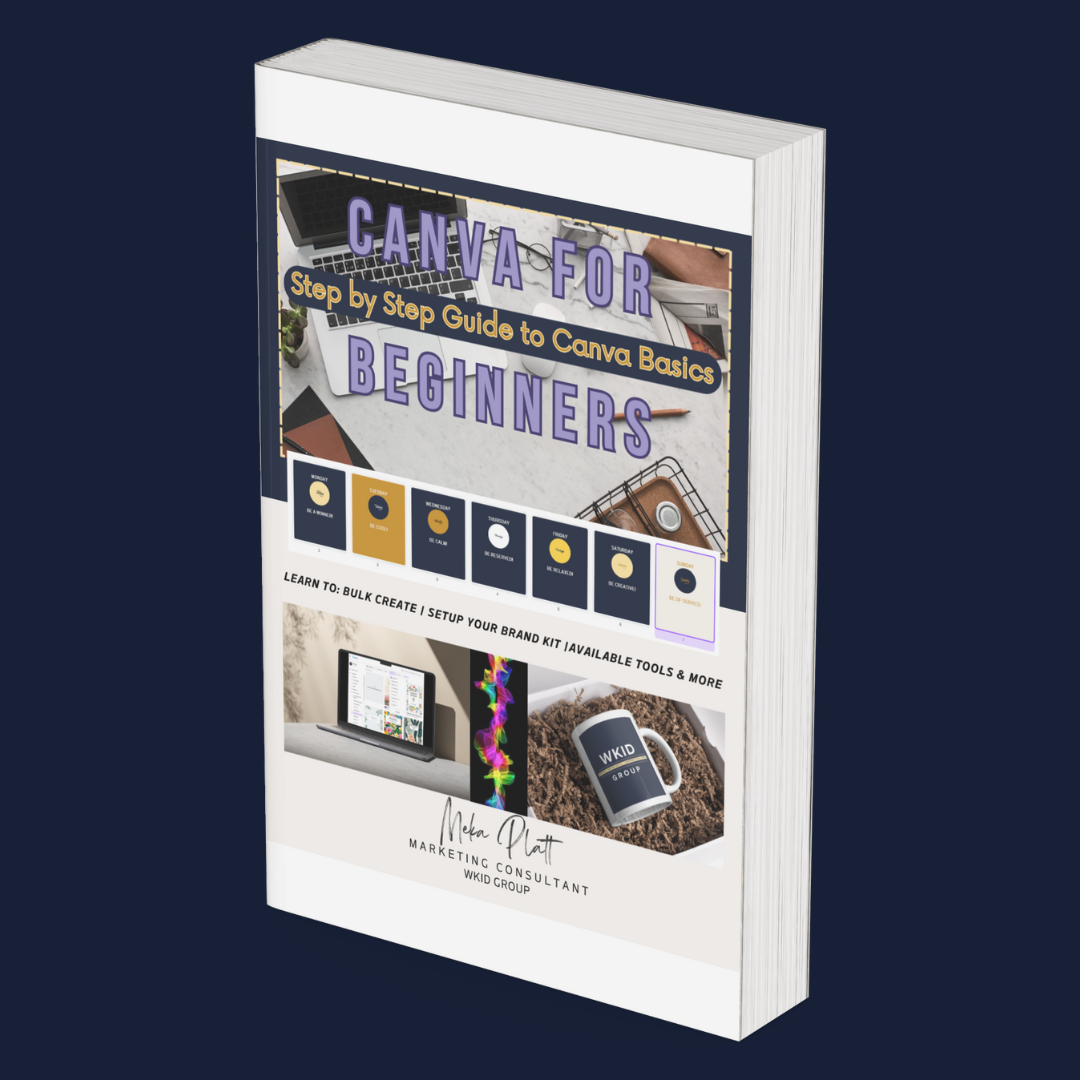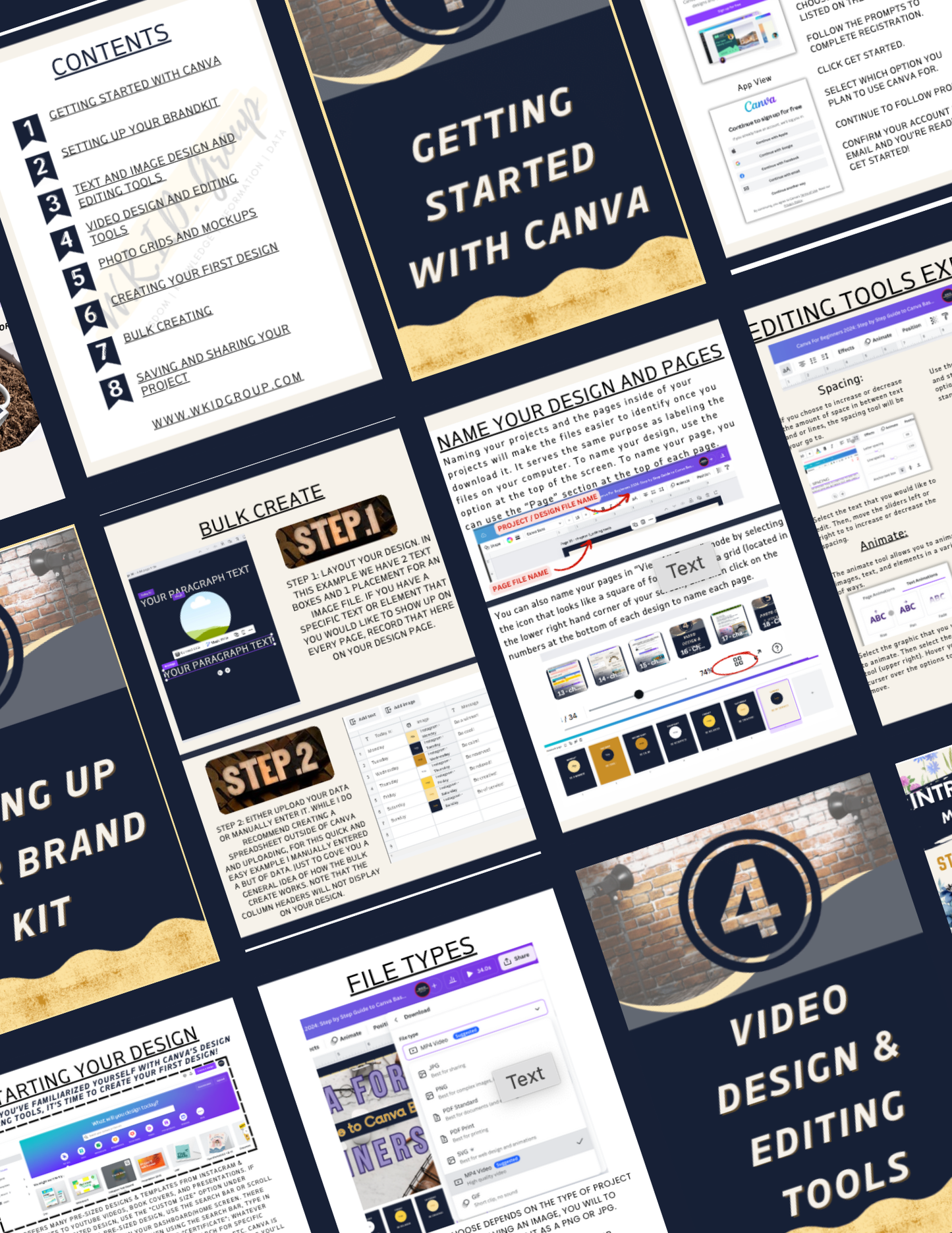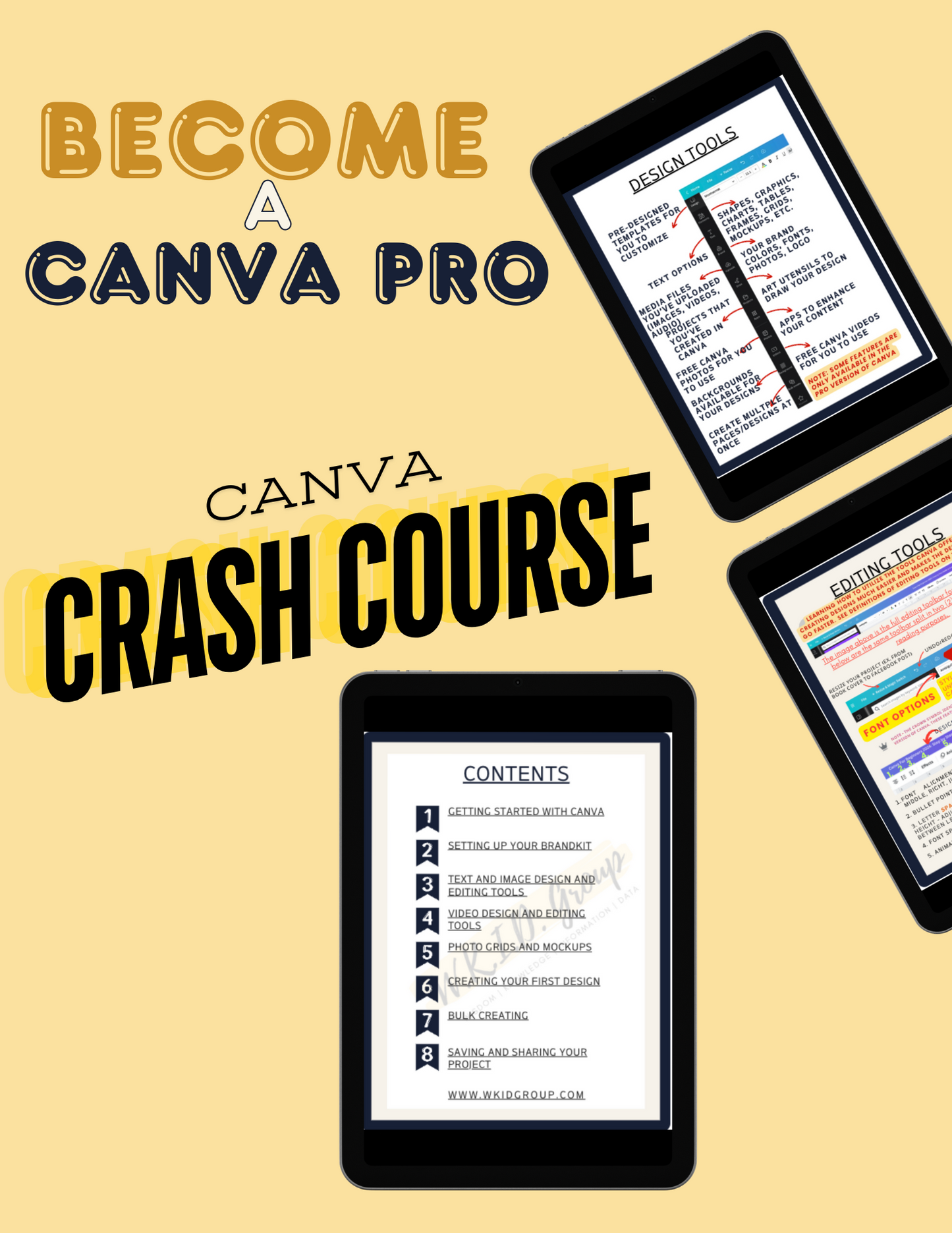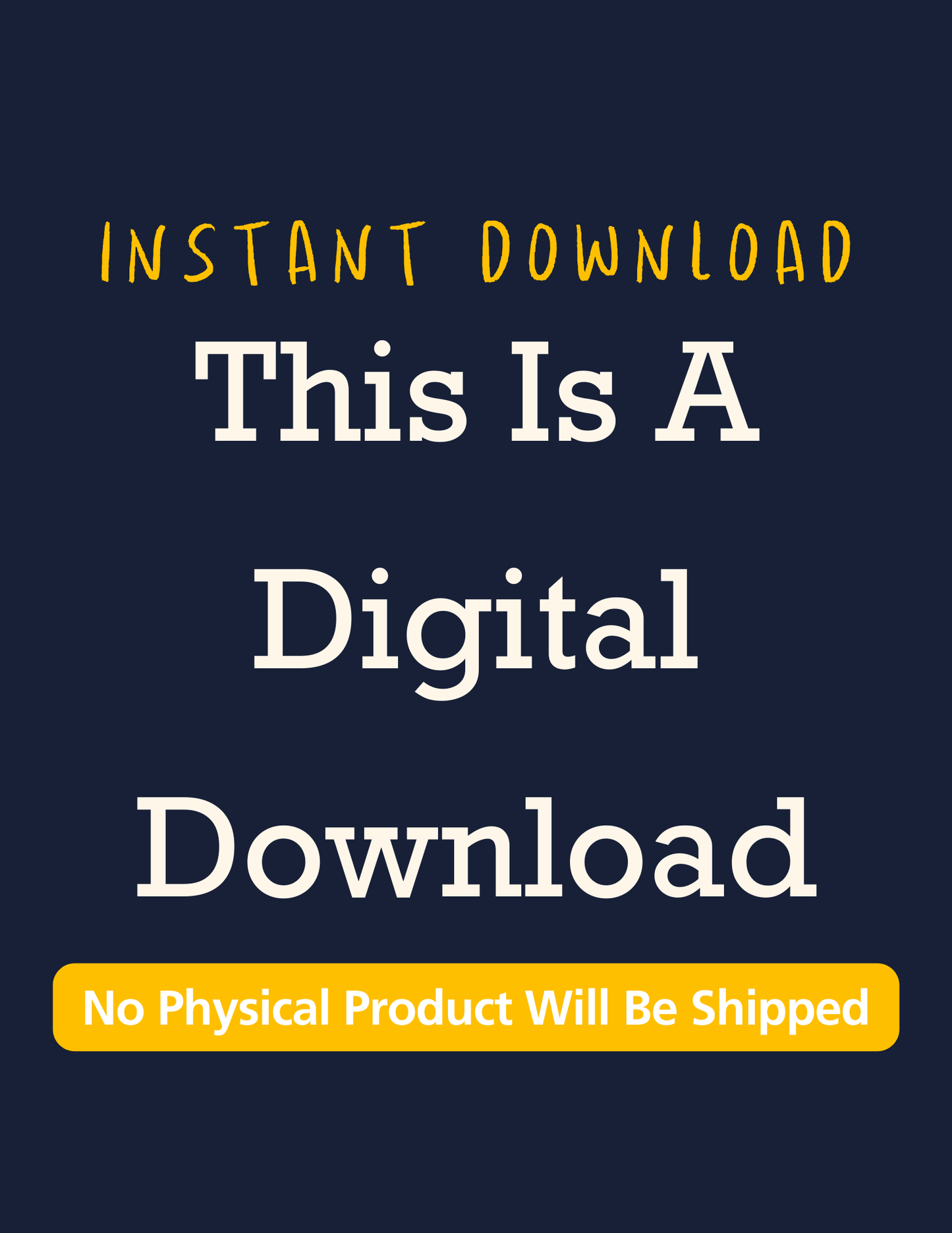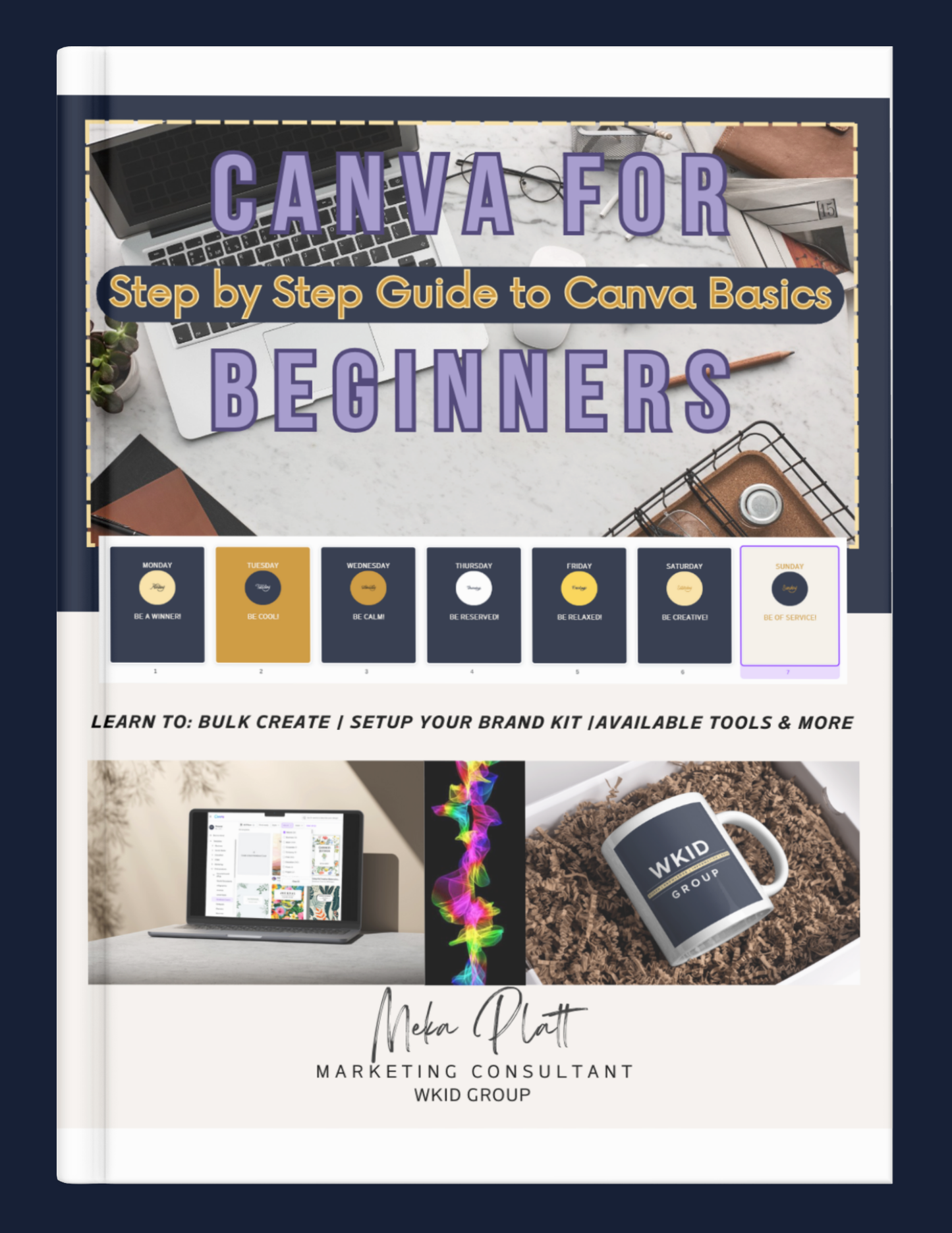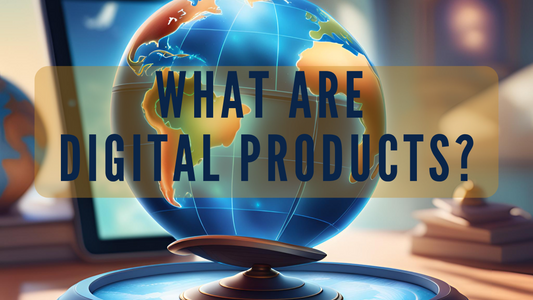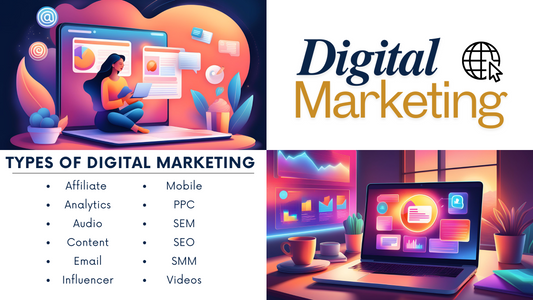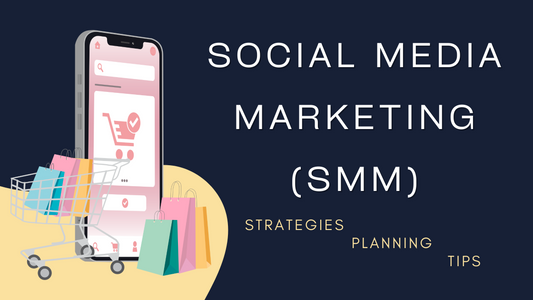Introduction
Creating and selling digital products has become an increasingly popular way to generate passive income. Whether you're a seasoned entrepreneur or just starting, understanding the complete process can help you tap into this lucrative market. In this article, we'll walk you through the essential steps to successfully create and sell a digital product.

Digital products are intangible assets that can be sold and distributed online. They include e-books, online courses, planners, software, music, downloadable prints, videos, and more. The beauty of digital products lies in their scalability and low overhead costs. Once created, they can be sold repeatedly without the need for inventory or shipping.

Step 1: Identify & Research Your Niche (Industry)
What are your current skills? What topics do you already know the foundational principles of?
Start by identifying your what you are good at. What subjects are you knowledgeable about? What do you enjoy doing and want to learn more about? Remember that there is always room for growth no matter the subject you choose. No one individual knows everything about any particular subject. To ensure that you remain motivated and gain more inspiration throughout the creation process, your digital product should align with your interests and skills.
Step 2: Validate Your Idea
Before investing time and resources into creating your digital product, validate your idea to ensure there's demand. Here are a few ways to do this:
- Google your subject, topic, and industry
- Search for other products similar to what you would like to offer
- Critically look into your competitors, the other products they sell, their prices, and their sales volume (if available)
- Ask yourself: Are there any gaps in the industry that I can possibly fill?
- Create a form using Google Forms or Jot Forms to conduct a survey using a social media platform like FaceBook to identify who your audience is and what their needs and pain points are.
Don't be afraid to use platforms like Etsy, Pinterest, & TikTok as search engines. These types of platforms will give you common keywords that are searched and will spark some ideas of where you can fit your digital product in.
Step 3: Establish Your Goals and Timelines
Be realistic! Take a moment to write down the short term goals you have for your first digital product. Focusing on achievable short term goals oppose to long term goals allows you to see your progress quickly and will keep you motivated along the way.
Write out your goals for the first twelve (12) months; walking through research, creation, production, marketing, and distribution of your first product. See example below. First, break the year out into four (4) quarters and establish four (4) goals; one goal for each quarter. Next, break out each quarter into three (3) months and establish one attainable goal for each month. Keep in mind that these goals can be as big or as small as you’re comfortable with. As long as they're realistic. Finally, break down each month by day, and dedicate one milestone to hit by the end of each week.
It is important to know what you are heading towards in order to remain focused and minimize the many distractions that can easily set you on a detour. The last thing you want is to get sidetracked and loose your momentum. Establishing this timeline in the beginning allows you to remain accountable to yourself and leaves plenty room to celebrate every win. This is also a great beginning to developing your marketing plan and your marketing strategy, which we will touch on shortly.
Step 4: Identify & Research Your Target Audience
Understanding your target audience is a crucial part of promoting your digital product and collecting sales. In order to quickly get your product in front of many people of interest, you must know where they are, what the like to do, what problems they have, what their pain points are, and how your product will not only provide them value but will solve their problem.
The most efficient way to begin conducting market research on your target audience is to create your target audience persona. Be as detailed as possible. What do they look like? What age are they? Where do they work and live? What's there day to day like? Where do they hang out for fun? What hobbies or interest do they have? Answering this line of questioning will give you a head start on locating "your people". You can use tools like Google Trends, surveys, social media, and other sights like Etsy & Pinterest to gain insights and gather data.
Knowing your audience will help you create a product that truly resonates with them. If you get stuck, don't hesitate to use AI (Artificial Intelligence) tools to spark creative ideas of your own. This step also plays a large role in your marketing plan and marketing strategy.

Step 5: Create Your Digital Product
Creating and selling digital products requires dedication and strategic planning, but with the right approach, you can build a thriving business and achieve your financial goals. Start with a detailed outline of your product. Break down the content into manageable sections or modules. This will serve as a roadmap and make the creation process more manageable. Again, if you get stuck, this is another opportunity to allow AI tools like ChatGPT to spark some ideas.
Select tools and software that will help you create your product efficiently. For example:
- E-books, Planners, Notebooks & Printable: Use Canva or Adobe InDesign for design and formatting.
- Online Courses: Platforms like Teachable, Udemy, or Kajabi are excellent for course creation.
- Music: Create on SoundTrack or BandLab (upload to TuneCore to sell)
- Graphics: Use Procreate, Adobe, or AI tools like Dall-E
- Photography: Portfolio can be uploaded and sold on sites like ShootProof, ShutterStock or Pexels
- Software: Use development tools like Visual Studio or Xcode.

Focus on delivering high-quality content that provides value to your audience. Ensure your product is well-designed, easy to navigate, and free of errors. Make sure that your content is entertaining, educational, and or informative. While investing in professional design and editing can further enhance your product's appeal, if your budget doesn't allow for this expense, you can use a platform like Canva to create all of your content.
Step 6: Choose Your Sales Platform
Select a platform to host and sell your digital product. This can be a landing page or a complete website. Popular user-friendly options include:
- Shopify: Great for e-books, planners, and other e-commerce stores. If you have created a variety of digital products to sell and would like to sell other products that require shipping, Shopify would be a great platform.
- Beacons: If you have a variety of digital products to offer that are on various sites, like Etsy or Amazon, where they give you a link to your product, you can create a landing page with Beacons to display all of your products in one place. This is a great alternative to designing a full website (which Beacons now offers).
- Gumroad: Ideal option for creators selling digital products and would like to offer a membership option. Gumroad is user friendly and does not charge monthly fees. Instead fees are charged per sale you make.
- Etsy: Suitable for printables, ebooks, one pages, designs, and creative digital goods. Cost friendly alternative to designing a complete website. Great starter option if you do not prefer to have a landing page.
Set Up Payment Gateways
Integrate reliable payment gateways to facilitate smooth transactions. PayPal, Stripe, and Square are widely used and trusted options. Consumers are more likely to order online from sites that use one or more of these credible payment processors.
Price Your Product
Determine a price that reflects the value of your product while remaining competitive. Consider offering tiered pricing, discounts, or bundles to attract more customers. Also, consider any financial goals you made in Step 2 and the current and future demands for your industry. Lastly, consider the prices of your competitors. Your prices are never set in stone and can be adjusted accordingly, as you see fit for the value of your product and your audience.

Step 7: Market Your Digital Product
Build a Website or Landing Page
Create a professional website or landing page to showcase your product. Highlight its benefits, values, and problem solving features to your audience. Consumers want to know what your product will do for them and how it will solve their problem. They will be willing to pay your price if they see value in your product. Help them see the value in your product!
Design Your Marketing Strategy & Marketing Plan
The purpose of having a marketing strategy is to aid in achieving your business goals. Your marketing strategy is the overall game plan to reach your target audience, connect with them, and turn them into prospective consumers. To successfully do this, your marketing strategy must begin with identifying your ultimate business goal.
Your marketing plan outlines the specific tactics you choose to use to advertise your product to your target market and make sales. A marketing plan includes how you want to reach your audience, what social media platforms to reach them on, when to best reach them, and where to advertise.
To gain a better understanding of the difference between a Marketing Plan and a Marketing Strategy, check out: Marketing Strategy vs. Marketing Plan.
Leveraging Social Media
Promote your product on the social media platforms where your target audience is most active. If you are initially uncertain of which platform to use, simple trial and error will be an good way to figure this out. Use a mix of organic posts and paid ads to increase visibility and drive traffic to your landing page or website. While Pinterest & Esty are not considered social media platforms, they are great platforms to market your product, increase your website traffic, and increase sales potential.
Email Marketing
Build an email list and nurture your subscribers with valuable content. Use email marketing to announce your product launch, offer exclusive discounts, and keep your audience engaged.
To begin creating your email list, offer something of value and at no cost to your leads, in exchange for their email address. You can create a one pager, something simple but something that your prospects would find entertaining, educational, and or informative.
For more marketing tactics, check out: 7 Easy Tactics to Get More Eyes on Your Website

Step 8: Launch and Optimize
Plan a strategic launch to create buzz and excitement around your product. Consider offering limited-time discounts or bonuses to encourage quick sales. Build a community with social media groups, forums, or other platforms to encourage user interactions and create a loyal user base. Stay active so that your content remains in the forefront of the minds of your audience and they become familiar with your brand.
Use some of the content your created in Step 5 and create more content if you choose. Remember to create eye catching, entertaining, informative, and or educational content. Steer away from only posting your digital product. Offer other content that is related to your industry. Initially, consumers will not know who you are so they may be a bit leery about your product if you just throw it out there. However, if you are offering other valuable content you will more quickly build the trust of prospect consumers.
After launch, pay close attention to the activity on your website, email campaigns, and other analytics like on your social media posts. If you are advertising using traditional methods, the analytics may be more challenging to track, however, you can create a simple spreadsheet of what you send and to you, in order to follow up. You may need to send an advertisement six (6) or seven (7) times (over a span of time) before getting the prospects attention.
Gather as much feedback as you can and use it to improve your product, adjust your marketing strategy, and your marketing plan. Keep fresh new content coming and stay engaged with your audience as is feasible for you. Continuous optimization will help you meet your audience's needs better, faster, and will increase your sales over time.
Closing
Creating and selling digital products can be a fulfilling and profitable venture. By following these steps—identifying your niche, validating your idea, establishing your goals and timelines, identifying your target audience, creating your product and high-quality content, marketing effectively, and continuously optimizing—you can turn your knowledge and skills into a successful digital product. Remember, the key is to provide value and connect with your audience's needs. Good luck on your journey!
If you have any questions or feedback, please feel free to leave them in the comments section below.




